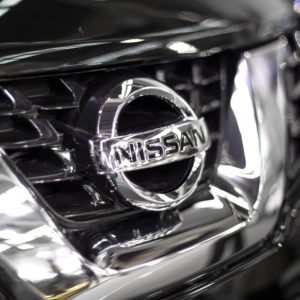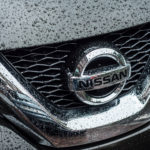The Nissan Frontier is certainly a tough workhorse that anyone can depend on. But as reliable as it is, the pickup can develop some issues over time.
One of these is difficulty starting the engine after jump-starting the battery.
Common Reasons Why a Nissan Frontier Dies After Jump Starting
A car that runs after a jump start and then dies isn’t unheard of. A Nissan Frontier (or any vehicle) that immediately dies after jump-starting will most likely have a drained battery or a failing alternator.
Failing Battery
The battery is the foundation of the electrical system, supplying power to start the engine and meet other electrical demands that go past the alternator’s output.
Among other things, a car’s battery also serves as a voltage stabilizer when there is a need to remove large amounts of current during starting.
Overcharging is the most common cause of battery failure. When a battery is overcharged, the active plate material disintegrates and falls out of the supporting framework.
Excessive vibration can also lead to the same problem as overcharging, which is why it’s important to ensure that the battery is securely clamped down to the vehicle.
Keep in mind that the battery hold-downs should be tightened to prevent the battery’s active plate materials from shedding.
When the battery begins to fail, you’re most likely to spot the following indicators:
- Corroded connectors
- Dim headlights
- Electrical issues
- Engine won’t turn
- Frequent jumps
Failing Alternator
The main job of the alternator is to keep the battery charged at all times. It acts as a generator that converts mechanical energy into electrical energy with an alternating current.
To make this possible, the belt-driven rotor inside the alternator turns with the help of a drive pulley. The magnetic field of the rotor then creates a current in the stator windings via electromagnetic induction.
Without a fully functional alternator, the battery won’t last very long. Alternator failure can be attributed to several issues.
The first one is a bad fuse. This might be a small component, but it can make or break the electrical system once it blows out or gets damaged. Wiring issues can also render an alternator useless.
A broken belt or pulley is another factor that can affect alternator operation. The pulley or belt can wear out over time and keep the rotor from turning.
Lastly, an alternator can fail when it has reached the end of its service life. Alternators are generally built to last a long time, but when their time’s up, there’s no other option but to replace them with a new or refurbished one.
Whether it’s the battery or alternator that needs attention, always remember that the two parts rely on each other to ensure the electrical system’s smooth operation.
The battery’s condition and voltage determine the charging rate of the alternator. A discharged battery will essentially have a lower voltage than a fully charged battery.
In this scenario, the alternator will supply a charging current, but it might not be able to reach the maximum charging voltage.
Aside from a faulty battery or alternator, there’s also a slight possibility that the jump-starting process didn’t go smoothly.
For more information on how to jump start a car, read our article here.
Other Related Issues to Jump-Starting a Nissan Frontier

Aside from their Frontiers dying out after jump starting, several owners of the Nissan pickup have also complained about other drivability issues.
Performance Problems
A 2005 Nissan Frontier owner reported that his truck had low idling and that the engine died every time he stepped on the accelerator pedal. This issue became apparent after jump-starting a dead battery.
According to some experts, this problem can occur when a new battery is installed. To resolve this issue, some professionals recommend performing an idle relearn.
An idle relearn is the process of helping the engine regain its idle and fuel trim strategy to restore optimum drivability and performance.
The entire process can be done with or without a scan tool, but that will ultimately depend on the vehicle’s specifications.
Keep in mind that the steps for performing an idle relearn also depend on vehicle specifications. But to give you a gist of what the job entails, here are some generic steps on how to perform one.
Accelerator Pedal Released Position Learning
First, make sure that the accelerator pedal is fully released. Then, turn the ignition to the “ON” position, wait for about two seconds, and turn it back to the “OFF” position. Wait for about 10 seconds before turning the switch on again.
Throttle Valve Closed Positioning
With the accelerator pedal fully released, turn the ignition switch on and off. From this point, make sure that the throttle valve is moving.
Engine Startup
Once the positioning tasks are done, it’s time to start the engine and let it warm up to its normal operating temperature.
Turn the ignition off and wait for at least 10 seconds before turning it on again. Repeat this step five more times within five seconds.
Depress and release the accelerator pedal. Wait for about seven seconds before depressing the accelerator pedal again for 20 seconds. This should stop the malfunction indicator light (MIL) from blinking.
Then, fully release the accelerator pedal, start the engine, and let it idle. Wait for about 20 seconds before revving up the engine. Make sure that the idle speed and ignition timing are within specifications.
Parasitic Draw
Parasitic draw is an activity that occurs when certain electrical components continue to drain the battery even when the engine is turned off.
In most cases, parasitic draw can be caused by the following:
- Faulty electrical components
- Poor installation of accessories
- User errors such as leaving the map light on
- Old battery
Any information provided on this Website is for informational purposes only and is not intended to replace consultation with a professional mechanic. The accuracy and timeliness of the information may change from the time of publication.


































